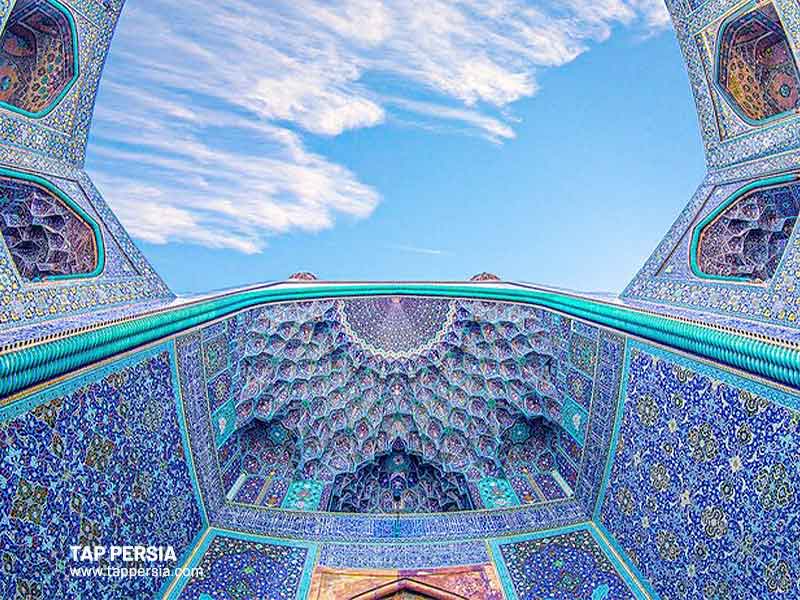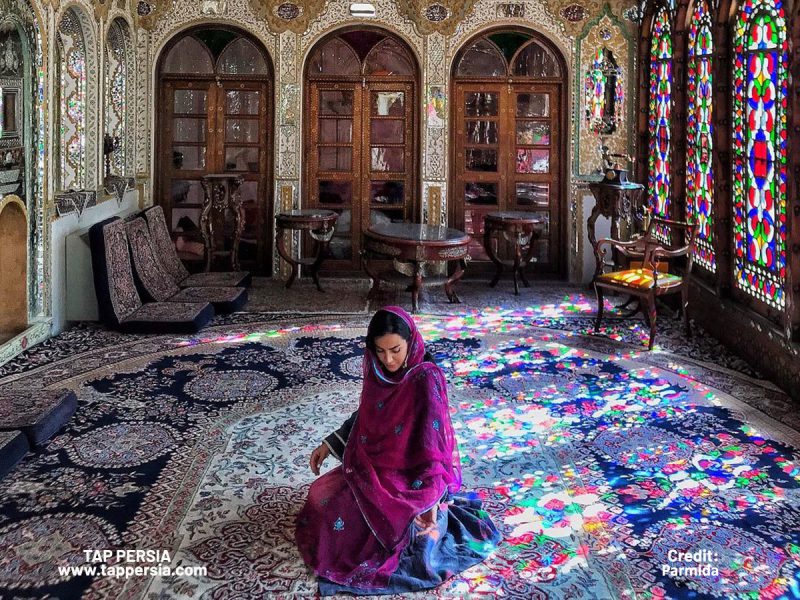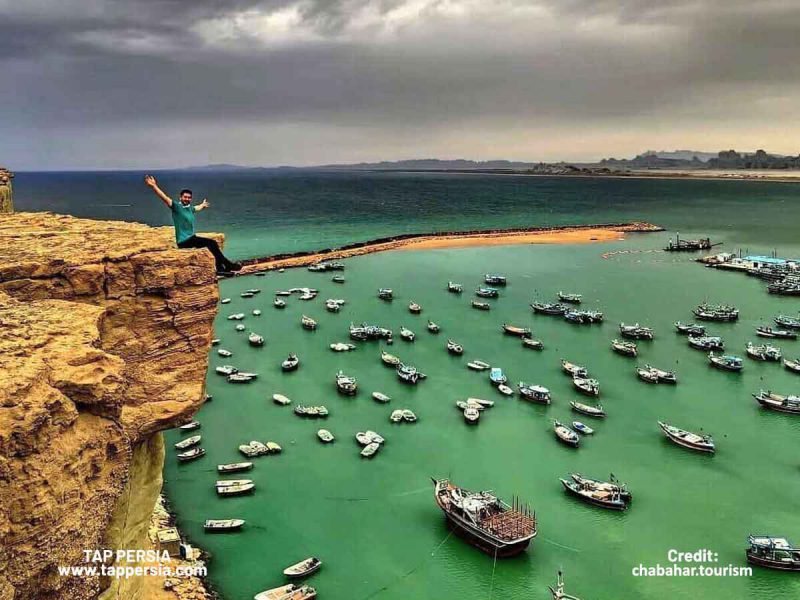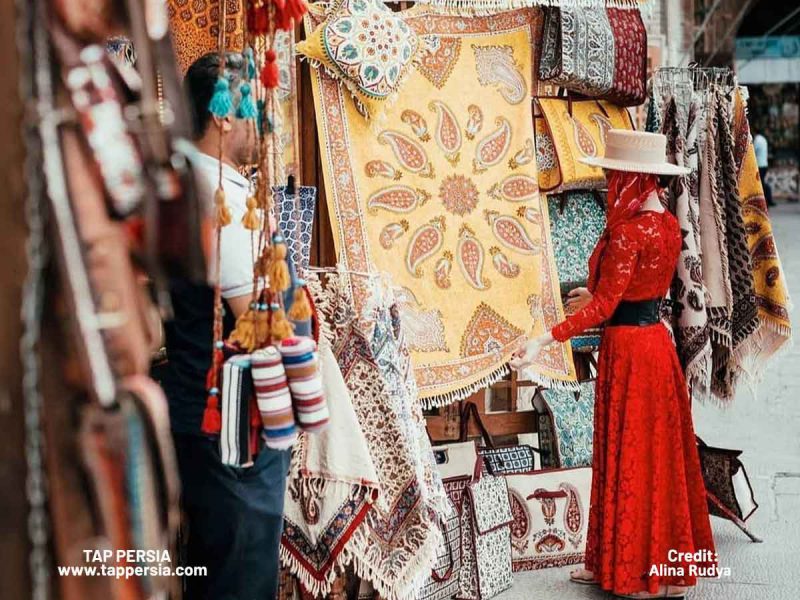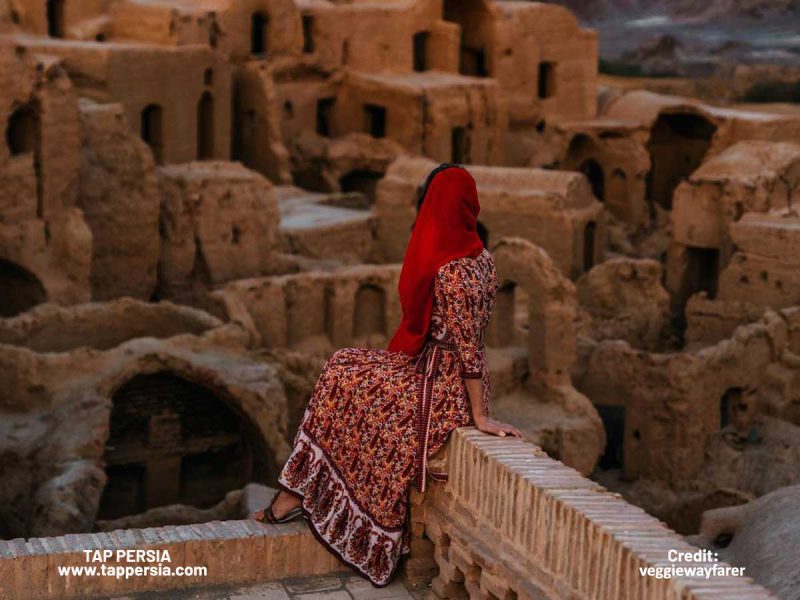Mosques in Iran are among the best in the world in terms of architecture. The combination of symmetrical patterns, geometric shapes, and vivid colors dazzles both tourists and residents.
Mosques in Iran are a sight to behold with their elaborate geometric shapes, exquisite artwork, and breathtaking brilliant colors. Therefore, these stunning holy sites are certain to enchant you to no end whether you’re a local or a visitor.
Here is a list of some of the most well-known and beautiful mosques in Iran. Your heart will certainly race when you see them. We really hope your journey is wonderful!
Architectural History of Mosques in Iran
Any building or open space used for prayer in Islam is referred to as a mosque, sometimes known locally as masjed or masjid (lit. “a place of prostration” to God). In general, symmetry, geometric patterns, and brilliant colors are used in the construction of mosques in Iran.
Because of the geometric designs, materials, and architectural styles unique to each area, there are differences in the architecture of mosques in Iran. These mosques frequently feature extremely intricate architecture that incorporates symbolic patterns, tiles, and color changes.
In religious structures like the mosque and madrasah, Islamic architecture—the architectural traditions of Muslim cultures dating back to the 7th century—finds its ultimate expression. According to Britannica, early Islamic religious architecture was influenced by Christian architecture and had characteristics like domes, columnar arches, and mosaics in addition to having huge courts for communal prayer and a mihrab.
Two examples of this are Jerusalem’s Dome of the Rock (691 CE) and Damascus’ Great Mosque (705) The distinctive semicircular horseshoe arch and lavish, nonrepresentational surface embellishment were used from the beginning. The development of the hypostyle mosque in Egypt and Iraq marked a turning point in the development of religious architecture. A mosque design that had four iyvans (vaulted rooms) that opened onto a central court was utilized in Iran.
Key Elements of Islamic Architecture of Mosques in Iran
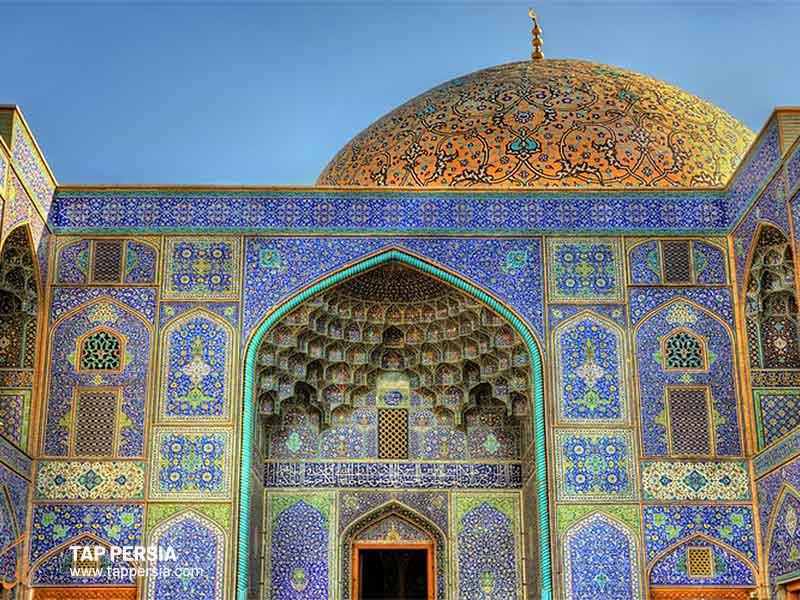
The following two components are crucial to understanding Iranian and Central Asian mosque architecture:
- A preponderance of circular shapes, especially arched and vaulted areas
- The preponderance of brick in the building, followed by glazed tiles
This is a remarkable departure from early Arabo-Mediterranean architecture, which favored flat roofs supported by pillars and employed stone as a building material. (The dome would eventually be used in Ottoman mosques.)
Mosques in Iran typically include four supporting pieces, either columns or piers, to create their vaulted interiors. Both the ancient Iranian garden pattern known as Chahar Bagh (“fourfold garden”) and the structure type known as Chahar Taq (“four arches”), both of which feature the number four, served as models for landscape design across the Arab world and erstwhile Moorish possessions in Asia and Europe.
1.Nasir ol Molk Mosque, Shiraz
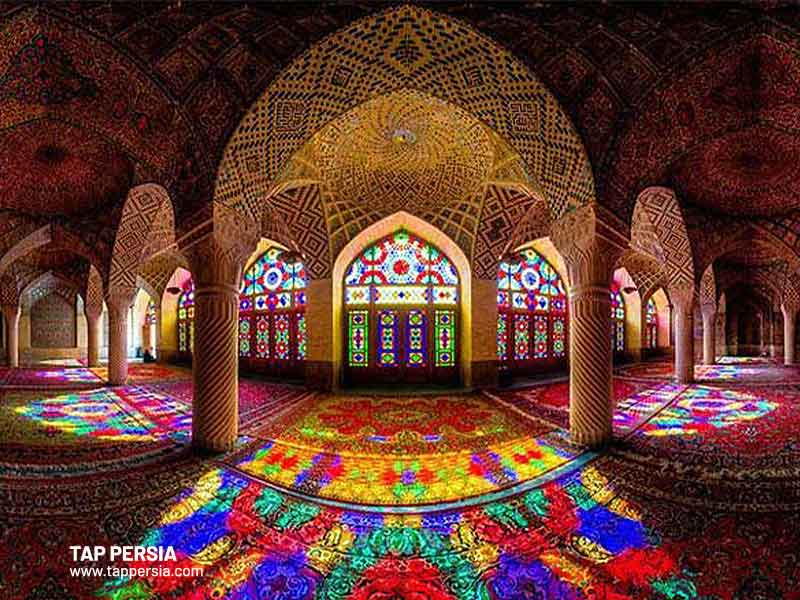
Between 1876 and 1888, the Nasir al-Mulk Mosque in Shiraz, Fars Province, Iran, was constructed and is considered the best mosques in Tehran. The Qajars were a Turkic tribe with ancestral territories in modern-day Azerbaijan, which was formerly a part of Iran. Agha Mohammad Khan founded his dynasty’s capital in Tehran, which is now the capital of Iran, in 1786.
The most magnificent structure in Iran, according to popular opinion, is this architectural wonder. Nasir ol-Molk, often known as the “Pink Mosque” because of its many rose-colored tiles, is a great place to spend your morning in Shiraz.
The sunshine floods in through the stained-glass windows and bounces off the Persian rugs, giving you a spiritual boost regardless of your beliefs. The Pink Mosque is best appreciated in the morning when sunlight streams through its stained-glass windows, transforming its interior into a kaleidoscope. It was built to capture the beautiful morning sun.
2.Jameh Mosque, Yazd
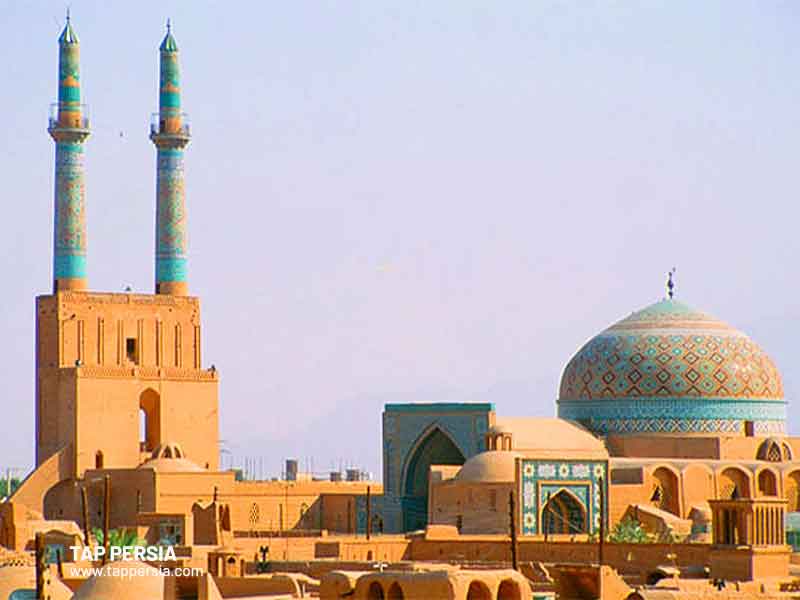
The Jameh Mosque is a famous mosque in Iran. The Jameh Mosque’s twin minarets are 52 meters (171 feet) in height, dominating the skyline that is primarily made of mud brick and adding a splash of turquoise. This mosque, which once housed a fire temple from the 15th century, offers visitors a dizzying array of decorative accents to admire and capture on camera.
A beautiful example of Persian architecture in the Azari style is the mosque. The mosque is topped by two minarets that are the tallest in Iran, and the façade of the doorway is covered from top to bottom with spectacular tile work that is mostly blue in color.
The interior of the tall doorway is filled with honeycomb tiles, Kufic writing, and plasterwork, all of which lead to the enchanting star-filled dome. The towering portal is decorated with fine calligraphy and intricate geometric designs.
3.Sheikh Lotfollah Mosque, Esfahan
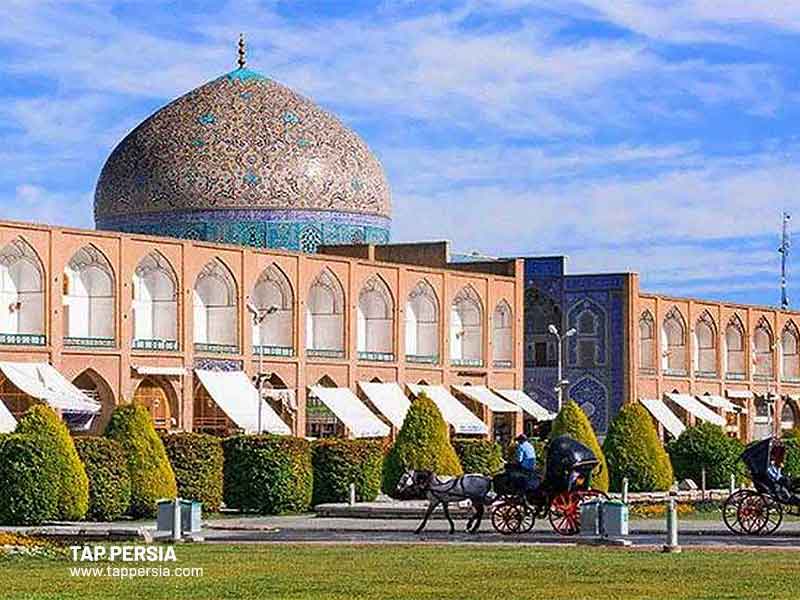
A short distance from Imam Mosque is Sheikh Lotfollah Mosque, which is renowned for its defiantly off-center dome and lack of minarets.
As the light travels throughout the day, the cream-colored tiles change hues, occasionally taking on a rosy tint. Without a doubt, the focus is on the dome, which features arabesque designs that grow smaller as they move closer to the center.
From the Sheikh Lotfollah Mosque, which is situated on the eastern side of Naghsh-e Jahan Square, one may approach the Isfahan Grand Bazaar. Sheikh Lotfollah, the father-in-law of Shah Abbas, is honored by this mosque, which was built under his rule. Shah ‘Abbas sent Sheikh Lotfollah, a well-known religious scholar and teacher, to Isfahan, where he lived but was not engaged in the mosque’s building.
4.Vakil Mosque, Shiraz
The Vakil Mosque often referred to as Masjid-e Vakil, is a mosque located in Shiraz, southern Iran, immediately outside the Vakil Bazaar’s entrance. This mosque was renovated in the 19th century, during the Qajar dynasty, despite being built between 1751 and 1773, during the Zand era.
The Zand Dynasty’s founder, Karim Khan, used the term “vakil,” which means “regent.” Karim Khan’s government was based in Shiraz, and he donated money to a number of structures, including this mosque.
8,660 square meters is the size of the Vakil Mosque. On the northern and southern edges of a sizable open court, it features two iwans instead of the customary four.
The iwans and court are ornamented with Shirazi haft rangi tiles, a characteristic component of Shiraz’s art and industry in the second half of the 18th century. Its night prayer hall (Shabestan), which is over 2,700 square meters in size, has 48 monolithic pillars with spiral carvings, each with an acanthus leaf crown.
With a flight of 14 stairs and a minbar carved from a single piece of green marble, this hall is home to one of the Zand period’s greatest works of art. The Qajar era is chiefly responsible for the flamboyant flowery ornamental tiles(Iran historical places).
5.Shah Cheragh Mosque Shiraz
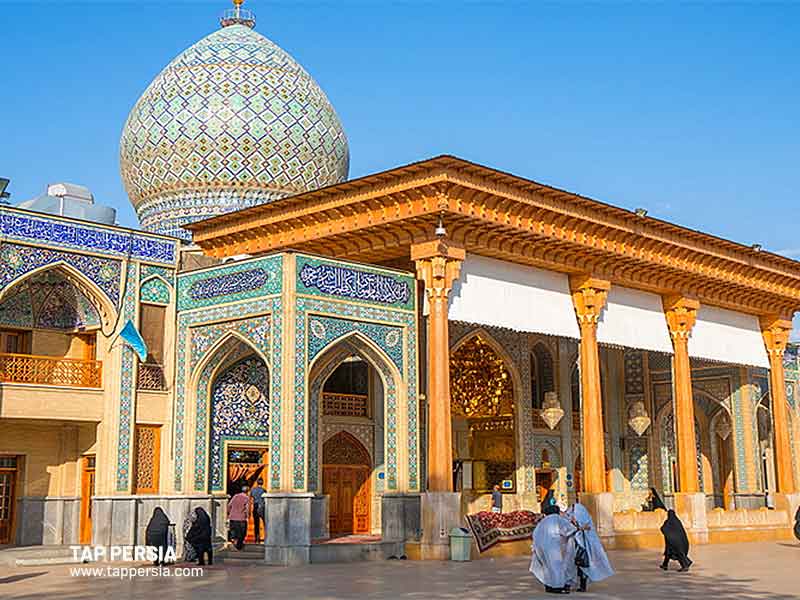
The mosque and tomb of identical twin brothers who were the seventh Shia Imam are located in Shah Cheragh. With its delicate tiles, gold-dipped minarets, and blue dome, it might look like an ordinary mosque from the outside, but the interior is breathtaking because to the thousands of angled pieces of sparkling mirror that reflect light. It makes sense that the name of this mosque made of mirrors means “King of Light.”
The mosque is located between the area under the dome and the tomb, which has a latticed fence. Additionally, other well-known pilgrimage sites in Shiraz follow this habit of positioning the tomb in this location so that it is not exactly beneath the dome.
This practice might be regarded as a unique characteristic of Shiraz shrines. The Mausoleum and the expansive courtyard that surrounds it on three sides are made more magnificent by the two little minarets that are located at each end of the columned portico. The Shah-e-Cheragh Mausoleum was added to Iran’s list of national monuments on February 10, 1940, as monument No. 363.
6.Blue Mosque, Tabriz
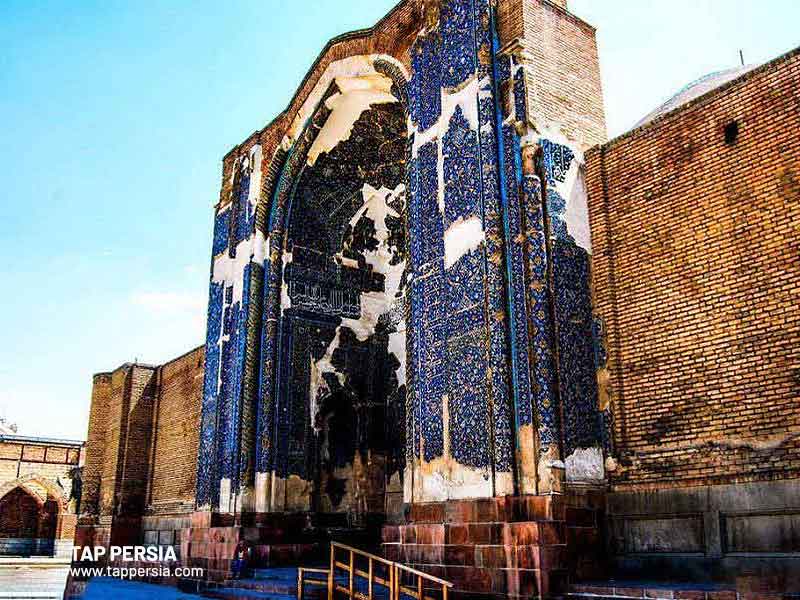
Iran’s Tabriz is home to the Blue Mosque, a revered mosque. Jahan Shah, the Kara Koyunlu monarch, commissioned the construction of the mosque and a few other public structures in 1465. Although the tomb was never finished, the Safavids used Tabriz as their capital throughout the first part of the 16th century, and it was the Blue Mosque that functioned as their mosque.
The towering entryway of the Blue Mosque still retains scars from the damage it sustained in a significant earthquake in 1779, as seen by the uneven walls and the missing brilliant blue tiles on those walls.
Reconstruction is carried conducted in line with the plans and guidance of Mohammad Reza Memaran Benam, a traditional architect from Tabriz, under the supervision of the Iranian Organization of Cultural Heritages.
The inside of the mosque is decorated with beautiful examples of Arabic calligraphy, including Kufic and Thuluth scripts as well as arabesque and geometric patterns. The Tabriz Blue Mosque , although not quite as vast or imposing as its brethren in Esfahan or Shiraz, is nevertheless among the most stunning buildings.
7.Shah Mosque, Isfahan
This mosque is also known by the titles Royal Mosque, New Abbasi Mosque, and Imam Mosque. One of the finest specimens of Persian architecture, it is listed among the United Nations World Heritage Sites. The mosque’s brilliance and elegance are mostly attributed to the septet-hued mosaic tiles that cover its open iwans and its exquisite calligraphic inscriptions.
Don’t forget to look at the patterns on the ceiling after entering to appreciate the beauty and architecture of the entryway. They are some of the most exquisite ones that are offered. Visitors may experience the unique acoustic qualities by standing underneath the main dome. When tapped, a stone in the center of the dome (different from others) reverberates loudly throughout the remainder of the structure.
It took clever design on the part of the architects to ensure that everyone in the mosque could hear the imam despite his speaking at a modest volume. Visitors can test the phenomenon by stepping on the stone, banging the ground on it, or clapping their hands underneath the dome. You can’t get this particular experience in any mosque in Iran.
you are able to read about 10 must-visit historical sites in Iran here.
8.Goharshad Mosque, Mashhad
The Goharshad Mosque was built on the orders of Empress Goharshad, a ruler of the Timurid dynasty in the fifteenth century. Formerly a stand-alone mosque, it is now a part of the complex housing the Imam Reza shrine and is utilized as one of the prayer halls, with a busy courtyard teeming with worshippers. The magnificent Thuluth inscriptions that decorate the walls and the azure dome that provides a stunning contrast with the nearby gold cupola make this a remarkable specimen of Islamic architecture.
9.Agha Bozorg, Kashan
One of Kashan’s must-see landmarks is the 19th-century Agha Bozorg Mosque, along with the old homes. A subterranean courtyard and tall wind catchers lend features of beautifully tiled minarets, and Persian design while adjoining arcades and a modest dome resemble traditional Islamic architecture. This modest brick mosque’s beauty is heightened by the beautiful woodwork, mirror, plaster, and geometric tile work. It’s a serene setting where you may reflect for a while.
10.Fatima Masumeh Shrine, Qom
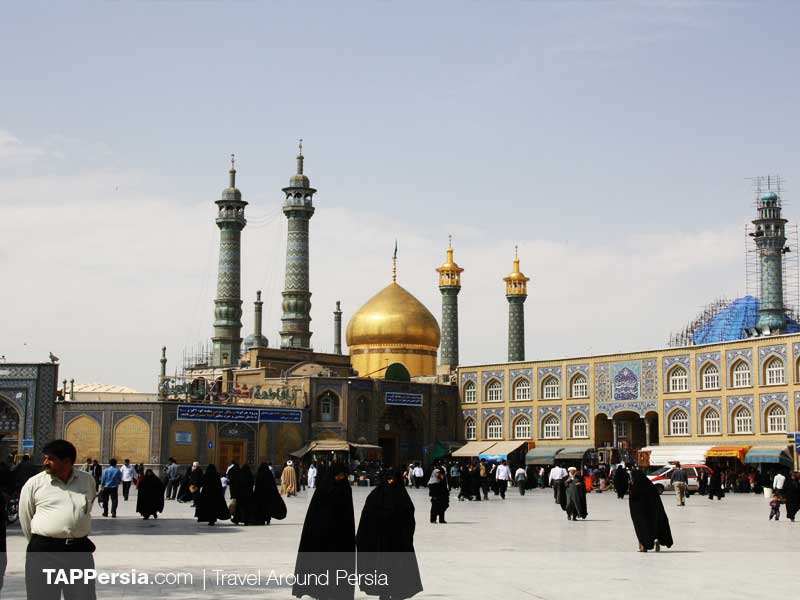
If you were merely going to travel through Qom as part of your plans, Fatima Masumeh Shrine will persuade you to stay. This magnificent mosque, one of Iran’s less well-known sites of worship, is named after Imam Reza’s sister; he is the eighth Shia Imam, and his mausoleum is in the holy city of Mashhad. This perfectly designed, expansive shrine, where famous tombs of kings, intellectuals, and clerics are also placed, is given a distinctively feminine touch by the geometric patterns and flower themes surrounding the massive entry alcove.
11.Imam Mosque, Esfahan
Shah Abbas ordered the construction of the Imam Mosque between 1611 and 1629 as a component of the Naqsh-e Jahan Square complex. Shaykh Bahai, the project’s principal architect, was tasked with creating a mosque to represent the role played by the clergy in the Empire’s political system.
The Imam Mosque is a part of the Naqsh-e Jahan Square complex, which is Isfahan’s top tourist destination. It was formerly known as the Shah Mosque until the 1979 revolution. It is regarded as one of the finest examples of Persian architecture from the Islamic era.
One of the best mosques in Iran, the Imam Mosque in Isfahan, is renowned for its blue-hued tiled walls, which have an almost heavenly feel.
While it is most renowned for its Islamic calligraphy, symmetrical arcades, unique acoustics, and open iwans, it seems that tourists are drawn to the domes, with many of them lying down to see the mosaics without straining their necks.
12.Sheikh Safi al-Din Khanegah and Shrine Ensemble, Ardabil
The mosque bearing the name of the founder of Sufi mysticism, Sheikh Safi al-Din, is situated near the northwesterly city of Ardabil.
It was constructed between the sixteenth and the eighteenth centuries, and its imagery depicts the seven stages and eight attitudes of Sufi mysticism, fusing Sufi and Iranian traditional architecture. In 2010, this temple complex became a member of UNESCO.
13.Atiq Jameh Mosque, Shiraz
In Shiraz, the provincial capital of Iran’s Fars Province, there is a mosque dating back to the ninth century. Atigh The Jameh mosque (Atiq Mosque), Shiraz’s oldest mosque, was begun in 276 A.H. and finished in 281 A.H. as a celebration of Saffarid Amroleiss’ victory of Shiraz.
It has gone through several repairs. This area has a unique appeal because to the height of the structure and the abundance of nighttime spaces (Shabestans) with beautiful tile work on the ceilings. East of it lies the Shah Cheragh Shrine. The north Iwan’s dome and the hypostyle columns are both immensely attractive.
There is a wall in the southern section of this mosque named “Nodbeh,” which stands out from other walls by having an image of vibrant cedar on it. It is thought that Boragh/Buraq walked through this (Nodbeh) Wall on the eve of Miraj. Iwan and Shabestan both exist. A subterranean chamber known as Shabestan is frequently seen in the traditional architecture of mosques in Iran, homes, and educational institutions. These areas, which could be ventilated by qanats and windcatchers, were often used in the summer. The “Imam Gate” is another name for the Northside. The North gate is decorated with tiles from Mogharnas.
14.Nain Friday Mosque
One of the oldest and most famous mosques in Iran, it was built in the ninth century. However, the interiors’ Seljuki-style brickwork makes them appear to date from the 11th century. This mosque, which may be among the oldest in all of Iran, still has its original architecture in place despite having been constructed hundreds of years ago. According to French academic Arthur Pops, the mosque’s foundation dates to the ninth century. Despite having a relatively straightforward design, it is quite lovely. The mosque has a central courtyard that is rectangular in shape and is flanked by hypostyles on three sides. The mosque’s mihrab is situated at one of these hypostyles.
The mihrab is a recess in the wall of an Islamic mosque that points in the direction of “Qebleh,” or Mecca, the sacred city where Muslims say five prayers each day. This mihrab is decorated with a stunning stucco design that dates to the ninth or tenth century. Another shrine nearby was built of wood and had fine woodwork inlay work. The mosque also features a Seljuk-era, 10th-century minaret that is 28 meters tall.
15.Masjed-e Jāmé of Isfahan
The Great Mosque of Isfahan is a group of structures in Isfahan, Iran, that is centered around a second, smaller domed chamber that was constructed in 1088 and is renowned for its exquisite proportions and architectural beauty. The central sanctuary was constructed between 1070 and 1075 under the supervision of Nim al-Mulk, vizier of Malik-Shh, the Seljuq emperor. It is located near the courtyard’s southernmost point. Twelve massive piers support its huge brick dome.
The smaller dome is located at the courtyard’s northernmost point. The single-shelled dome is a structural marvel that has stood unharmed for millennia. The space measures around 30 feet (9.1 meters) wide and 60 feet (18.2 meters) high and is enclosed with little gray baked bricks.
With 16 at the top and one wide arch sandwiched between two thin ones on each wall at room level, the dome is supported by a sequence of arches. The mosque complex is surrounded by four enormous ivans, or arched recesses, and contains buildings from the 11th to the 18th centuries, including libraries, schools, private chapels and treasuries.
Are There Any Mosques in Iran?
According to government figures, Iran is believed to have 10,344 Sunni mosques and 47,291 Shiite mosques as of 2015.
How Many Mosques Are There in Iran?
There are over 80,000 mosques in Iran, according to data. The holy city of Qom, referred to as Iran’s “religious capital,” is home to more than 150 mosques in various architectural styles.
Which is the Famous Mosque in Isfahan?
The Shah Mosque, commonly referred to as Masjid Shah, is the most famous mosque in Iran, situated in Isfahan. It is located on the southern side of Naghsh-e Jahan Square. Shah Abbas I of Persia gave the order for its construction to take place during the Safavid era. In terms of architecture, it is also the most noteworthy illustration of Persian architecture from the Islamic era.
Is There a Sunni Mosque in Iran?
Sunnis have recently been denied permission by Iranian authorities to construct their own mosques in Iran. Despite having several churches and synagogues for considerably smaller Christian and Jewish communities, the city currently lacks a Sunni mosque.
Who Built the Great Mosque of Isfahan?
Ali Akbar Isfahani is the mosque’s architect. An inscription with his name is located in the mosque over the entrance to the iwan complex.

